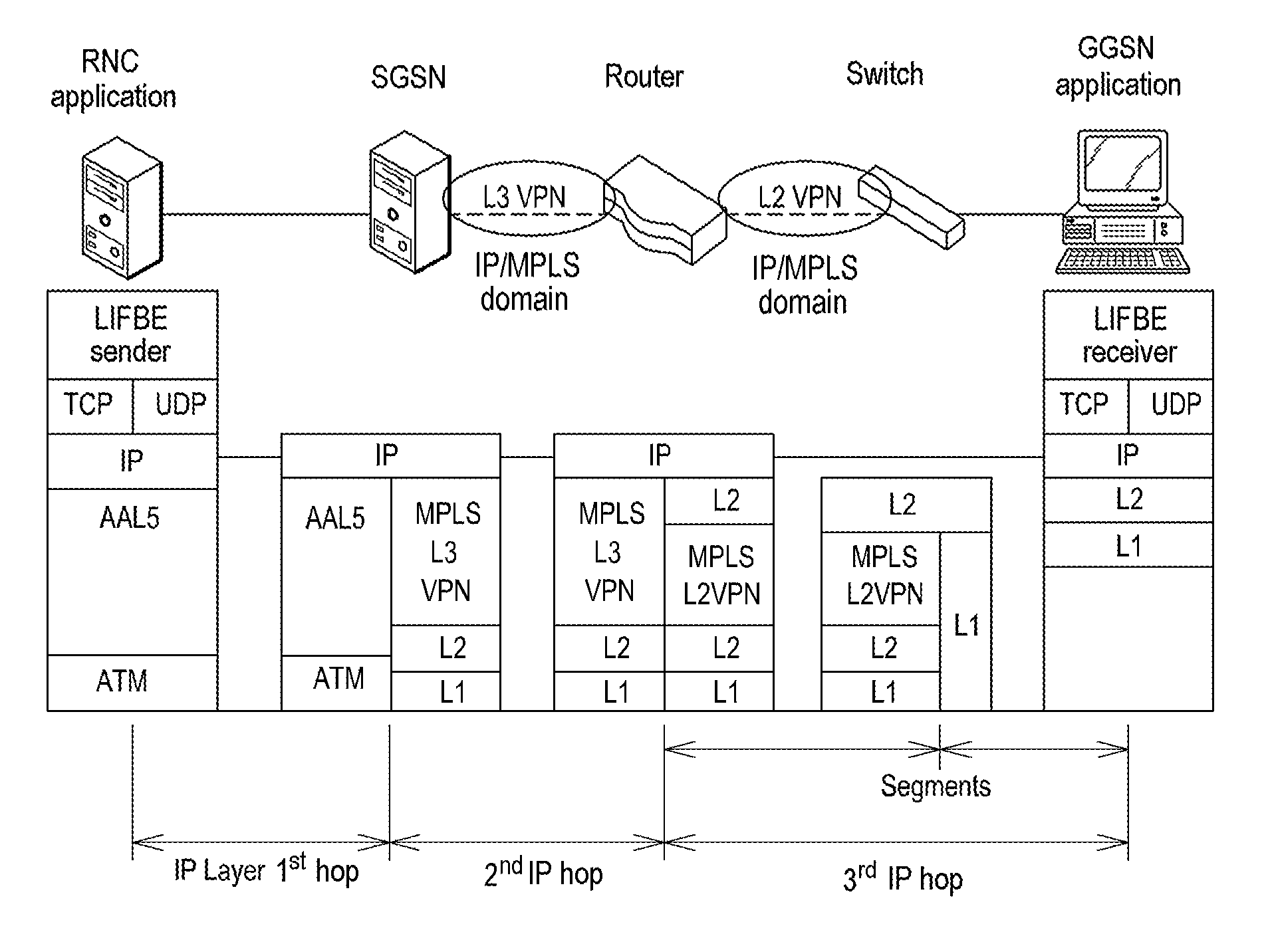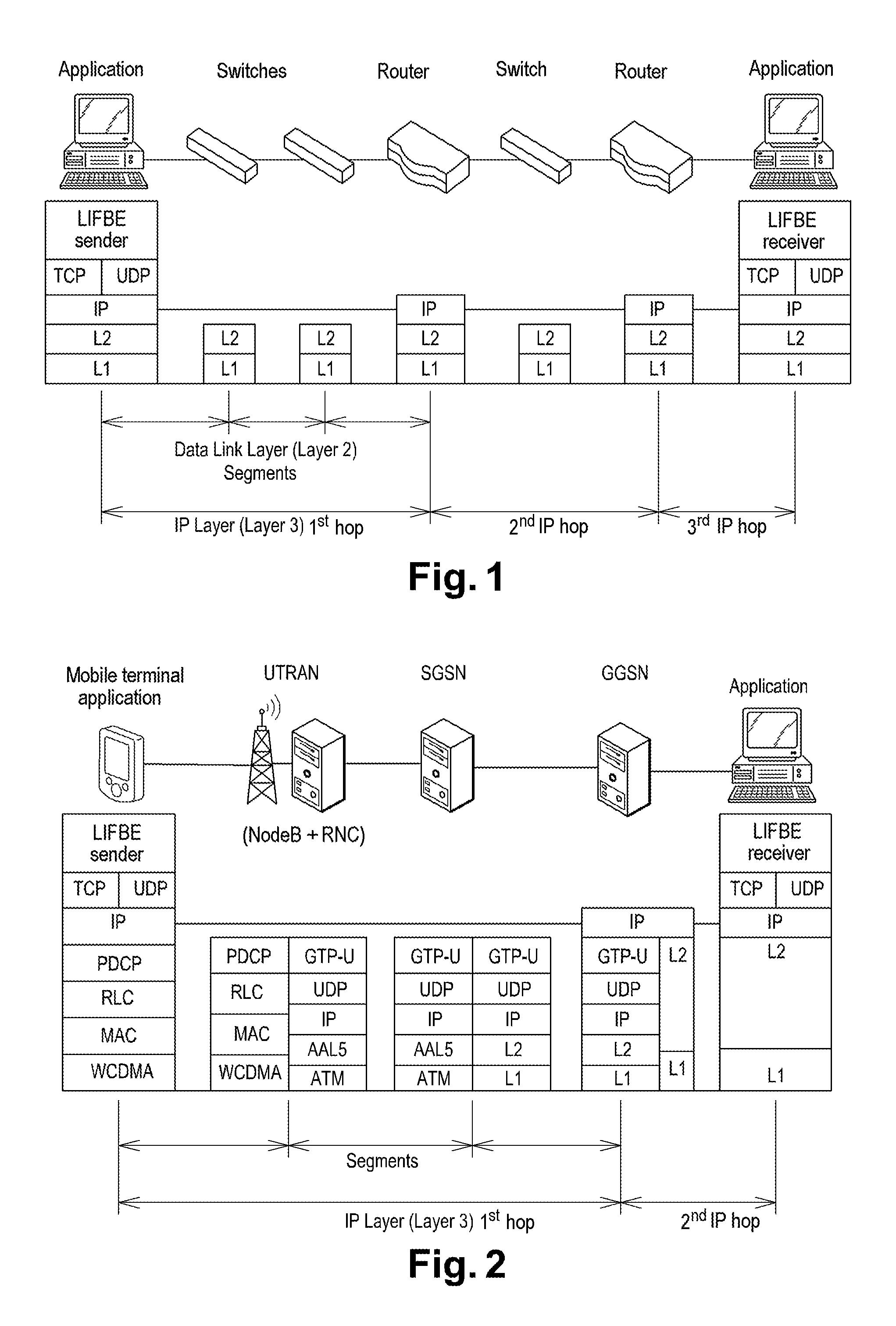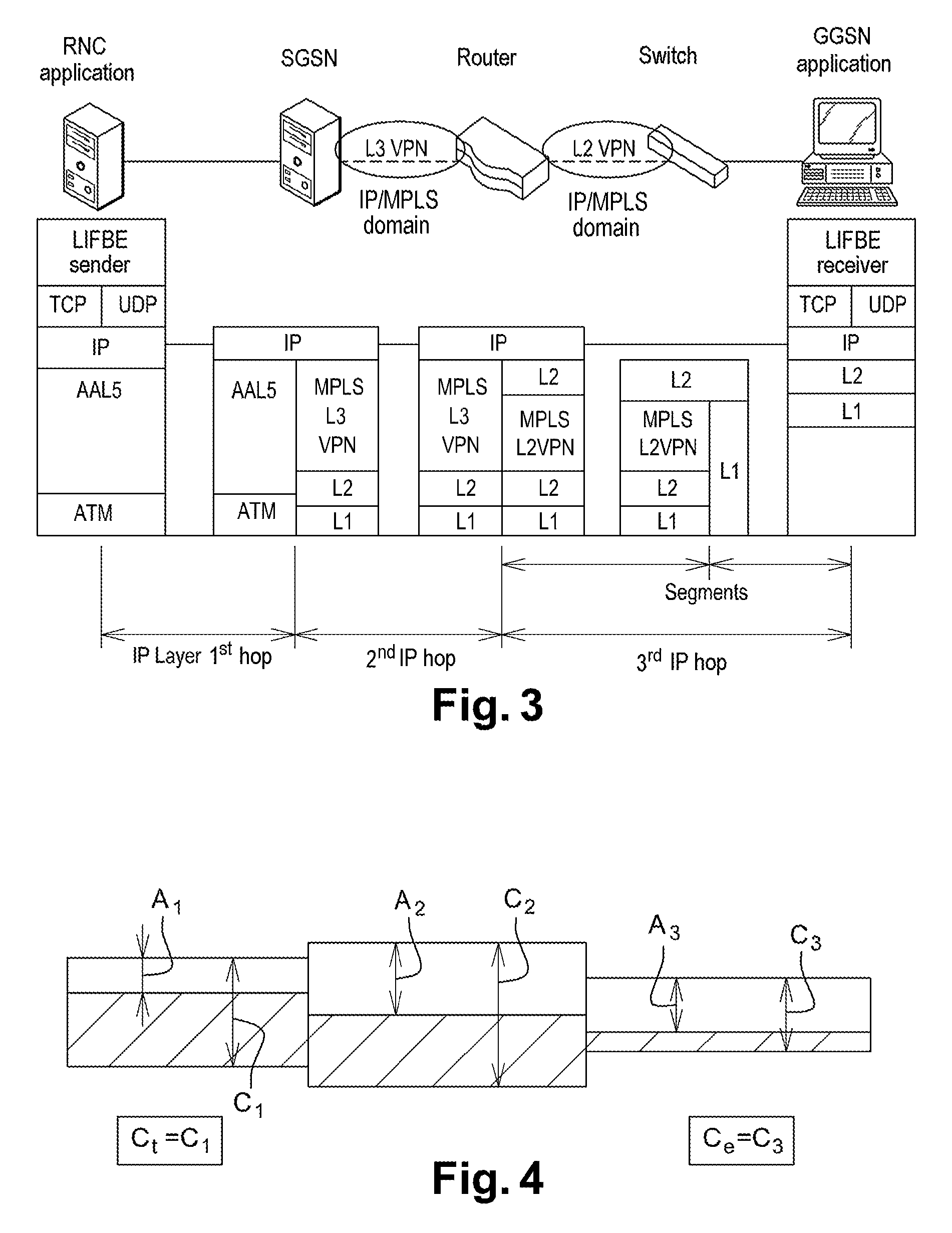Method and a device for low intrusive fast estimation of the bandwidth available between two IP nodes
a technology of low intrusion and fast estimation, applied in the direction of digital transmission, data switching network, electrical apparatus, etc., can solve the problems of low accuracy, strong influence of error in estimating capacity ce, and underestimated available bandwidth a/sub>b /sub>, so as to achieve fast and less intrusion
- Summary
- Abstract
- Description
- Claims
- Application Information
AI Technical Summary
Benefits of technology
Problems solved by technology
Method used
Image
Examples
Embodiment Construction
[0108]The method of an exemplary embodiment of the invention for estimating available bandwidth takes place at the level of the IP layer. The available bandwidth is estimated for a stream between a send node and a destination node that are connected by a path made up of one or more links of a telecommunications network. The network can transport other, competing IP streams over the entire path or over a portion only thereof. In the various calculations, the method takes account solely of the IP streams belonging to a given class of service or belonging to a higher class. In particular, a node of the network sends the packets of these various streams under consideration (with this commonly being performed by the IP router function) and, if necessary, it delays the sending of the packets. The delay is provided by means of a single first-in-first-out (FIFO) type queue if the network does not manage QoS or with a queue for each class of service if QoS is managed. Under such circumstance...
PUM
 Login to View More
Login to View More Abstract
Description
Claims
Application Information
 Login to View More
Login to View More - R&D
- Intellectual Property
- Life Sciences
- Materials
- Tech Scout
- Unparalleled Data Quality
- Higher Quality Content
- 60% Fewer Hallucinations
Browse by: Latest US Patents, China's latest patents, Technical Efficacy Thesaurus, Application Domain, Technology Topic, Popular Technical Reports.
© 2025 PatSnap. All rights reserved.Legal|Privacy policy|Modern Slavery Act Transparency Statement|Sitemap|About US| Contact US: help@patsnap.com



